Growing houseplants from the division is easy, fun, and a cheap way to have more specimens! Here are the best ones to try your hands on!
Different botanical specimens perform best in different propagating scenarios – some grow best from cuttings, while some develop better from seeds. However, there are also houseplants that grow the best from division! Let’s learn about them in detail!
Read our Article on Indoor Plants That Grow from Leaves
Houseplants That Grow Best From Division
1. Snake Plant

Botanical Name: Dracaena trifasciata
To divide these plants, take the parent specimen gently from its pot and look for clumps with a healthy root system.
Using a sharp knife, separate them from the main plant, making sure each one has its own set of roots and leaves – plant them in a well draining potting mix.
2. Pothos

Botanical Name: Epipremnum aureum
Pothos grow the best from cuttings but you can also try dividing them!
Take the plant out from container and look for natural separations. Divide the section and ensure each one one healthy main stem with roots attached.
3. String of Pearls

Botanical Name: Senecio rowleyanus
Look for the healthiest stems and roots. Carefully separate these sections and plant each division in well-draining cactus mix.
4. Peace Lily
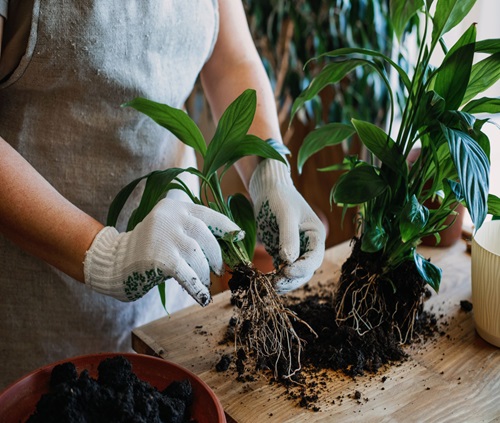
Botanical Name: Spathiphyllum
Remove the plant and locate where the roots and stems naturally divide. Gently separate the healthy sections and plant each division in a pot with rich, well-draining soil.
5. Inch Plant
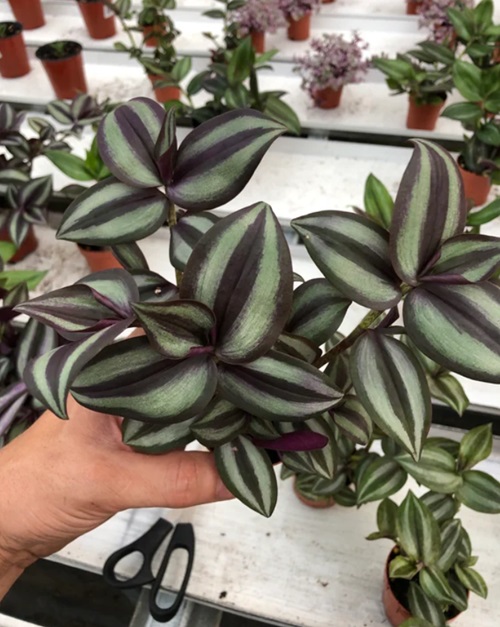
Botanical Name: Tradescantia zebrina
After extracting the plant, look for healthy root sections. Divide using a sharp knife, ensuring each part has ample foliage. Replant in moist, well-draining soil.
6. ZZ Plant
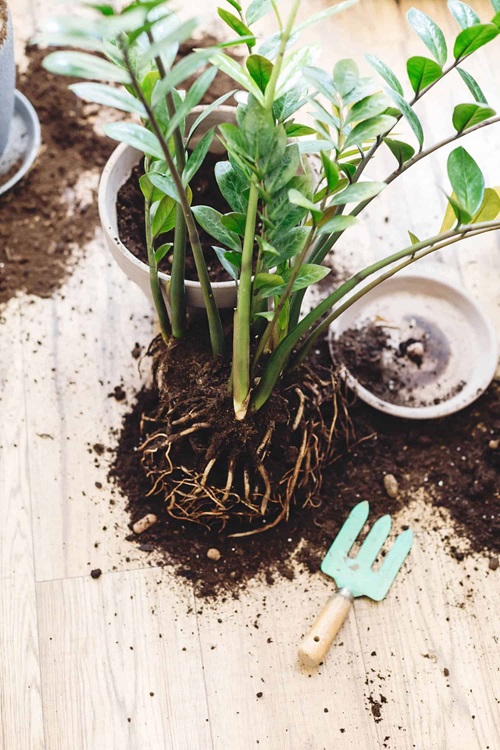
Botanical Name: Zamioculcas zamiifolia
Pick the healthiest rhizome and gently separate each with ample root section. Plant in a pot with well-draining soil.
7. Philodendron
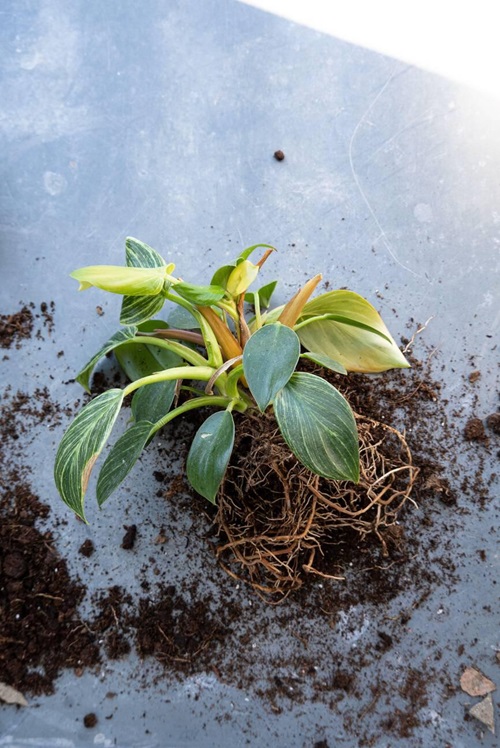
Botanical Name: Philodendron spp.
Like pothos, this one can be propagated using division, too. Look for healthiest stem section and snip it with roots attached. Plant each division in fresh soil.
8. Christmas Cactus
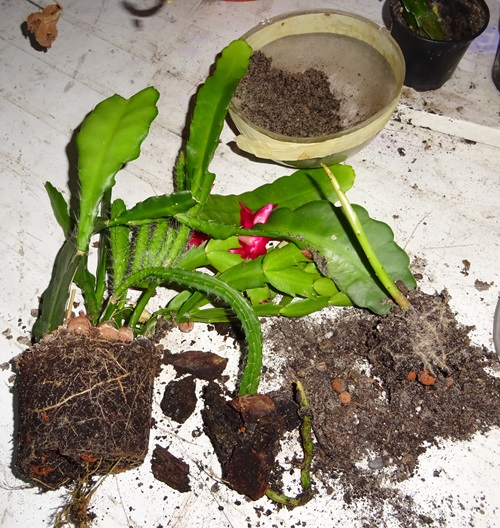
Botanical Name: Schlumbergera
Carefully detach a segment of the stem and allow it to callous over for a few days. Plant it in a cacti or succulent mix.
9. Spider Plant

Botanical Name: Chlorophytum comosum
Dividing this plant is a walk in the park! Simply take it out, and cut in three healthy sections – that’s it! Plant them in separate pots with well-draining soil. You’re done!
10. African Violet
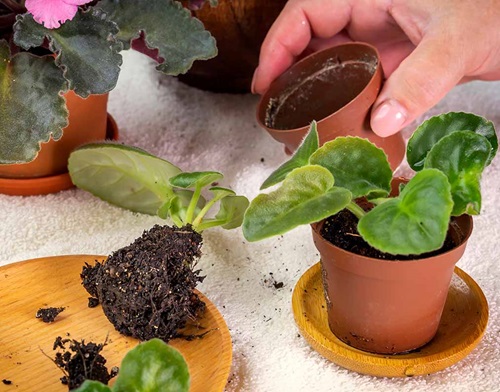
Botanical Name: Saintpaulia spp.
Carefully take the plant out and identify the offsets. Cut them in small clumps, each with roots and leaves. Plant in African violet potting mix.
11. Aloe Vera

Botanical Name: Aloe barbadensis miller
Aloe is also very easy to divide – you see those fleshy leaves, well, they have separate root sections – simply divide and re-pot in fresh soil.
12. Rubber Plant
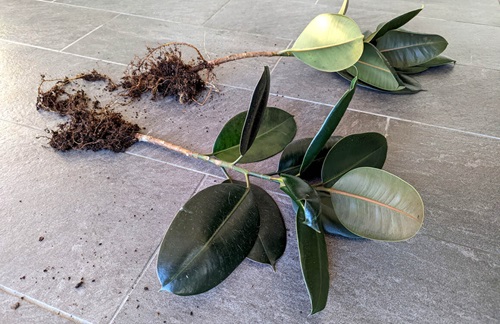
Botanical Name: Ficus elastica
Thought the plant grows the best from cuttings, you can surely try the division method, too!
Look for natural divisions with healthy root segments. Separate using a clean knife, and plant in a separate pot with fresh potting mix.
13. Chinese Money Plant

Botanical Name: Pilea peperomioides
Identify the offsets at the base and snip them without damaging the parent specimen. Plant in well-draining soil.
14. Arrowhead Plant
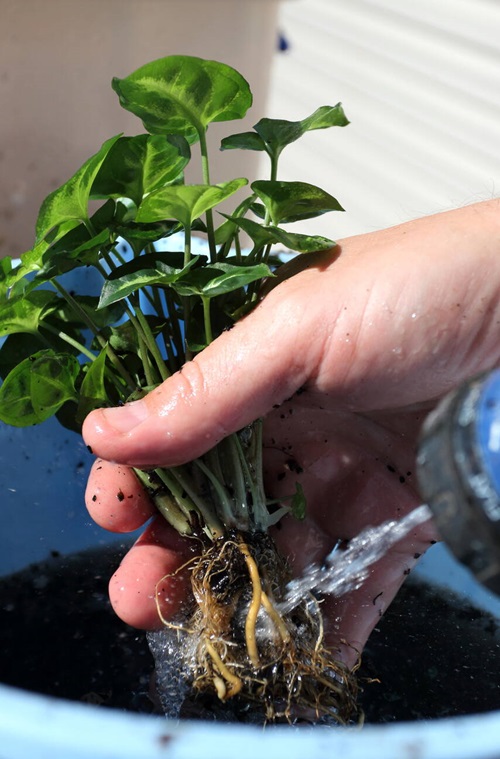
Botanical Name: Syngonium podophyllum
Look carefully for divisions in the root system and cut with roots attached. Plant in moist, well-draining soil and provide indirect light.
15. Chinese Lantern Plant
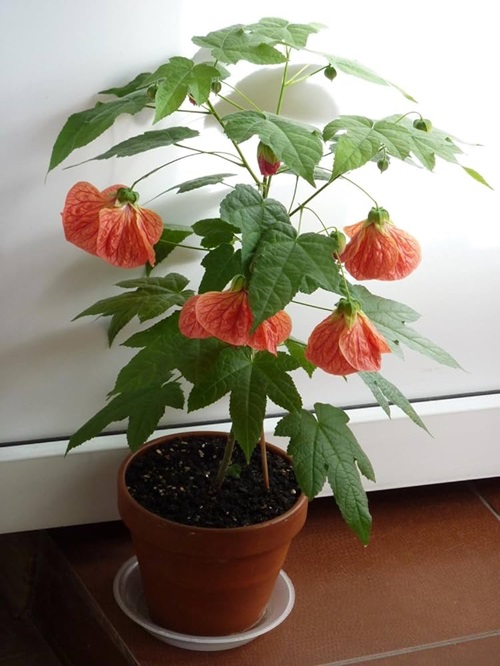
Botanical Name: Abutilon x hybridum
Gently divide the root ball, ensuring each section has a few stems and leaves. Make sure it gets plenty of sunlight indoors for proper growth.
16. Peperomia
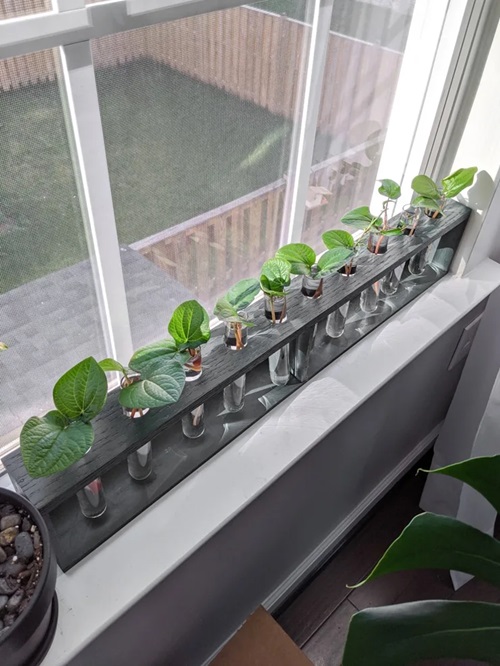
Botanical Name: Peperomia spp.
Crumble away the soil from the root ball to look for healthy sections – cut them away with adequate roots and foliage. Plant in a well-draining potting mix.
17. Hoya
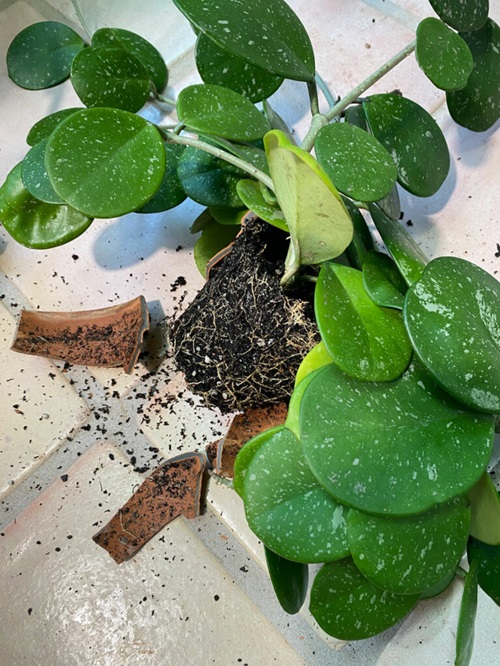
Botanical Name: Hoya spp.
Look for sections where stems can be cleanly cut, each with a node. Root them in well draining potting mix and keep in indirect light.
18. Ferns
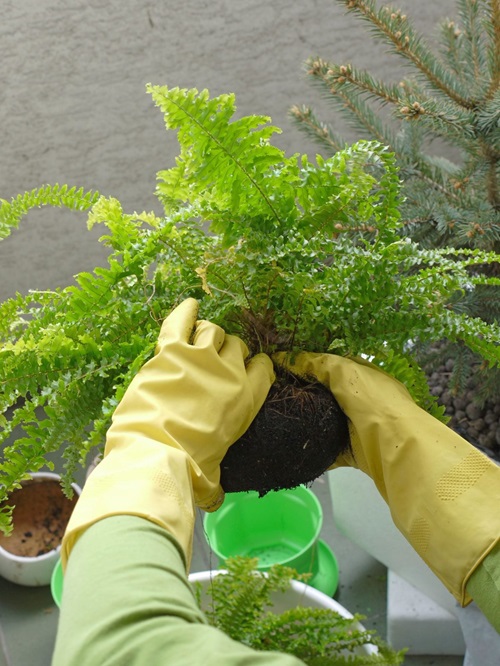
Remove the fern from its pot and gently pull apart the rhizomes. Snip away healthy ones, ensuring each division has fronds and roots. Plant in a moist, well-draining potting mix.
19. Swiss Cheese Plant

Botanical Name: Monstera deliciosa
After taking out the plant from the pot, you can easily make out sections with roots – just snip them away and plant in new container – simple!
20. Haworthia
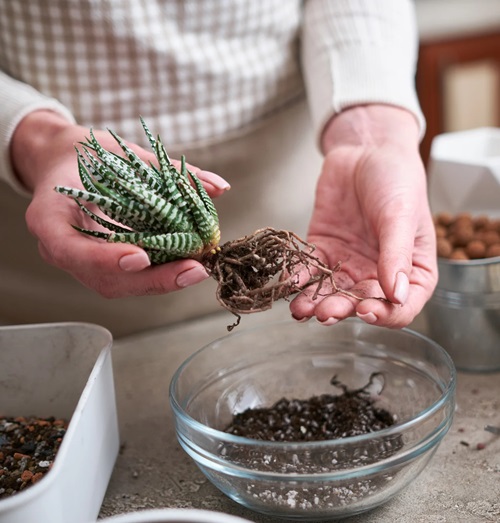
Botanical Name: Haworthia spp.
Remove the plant and look for offsets. Separate the small ones and plant them in a pot with succulent or cactus mix.
21. Hostas

Botanical Name: Hosta
Carefully uproot the plant and divide the root ball in sections having the most roots. These can be 2-3 depending on the size of the plant – grow them separately in pots.
22. Daylilies
Botanical Name: Hemerocallis spp.
Gently separate the root clumps from the parent plant with each section having several fans of leaves. Replant in a sunny location with a fresh potting mix.



